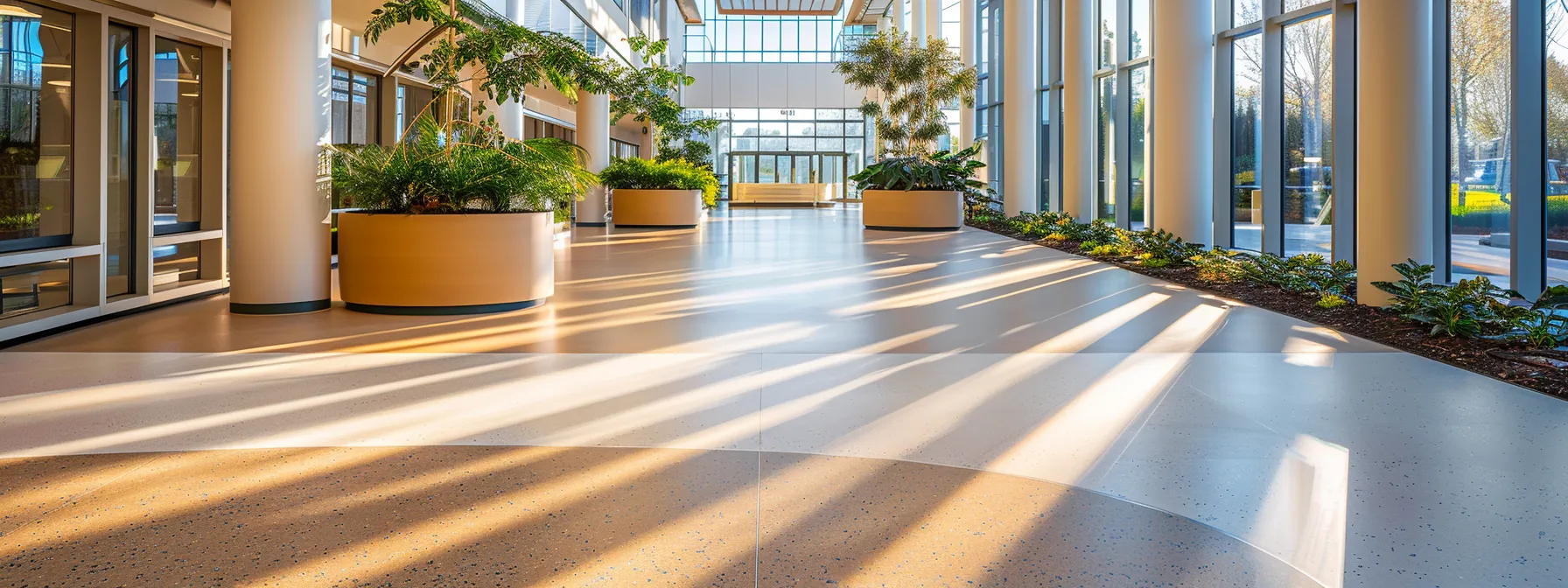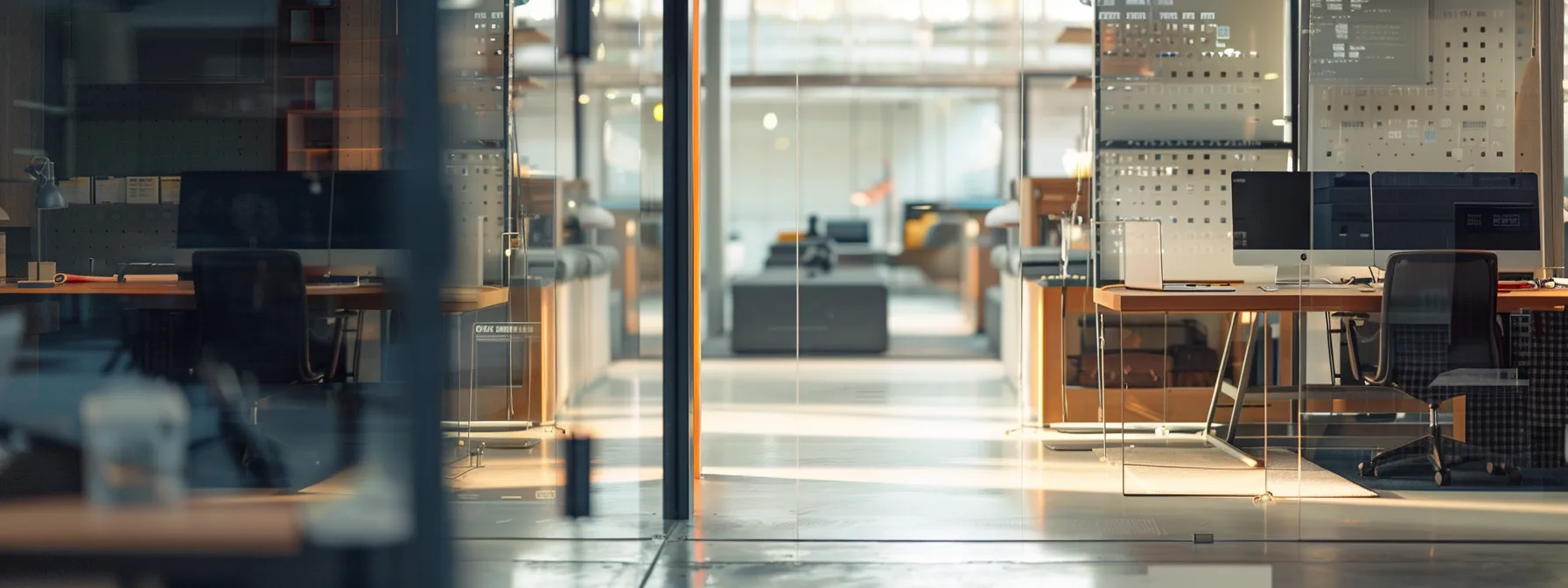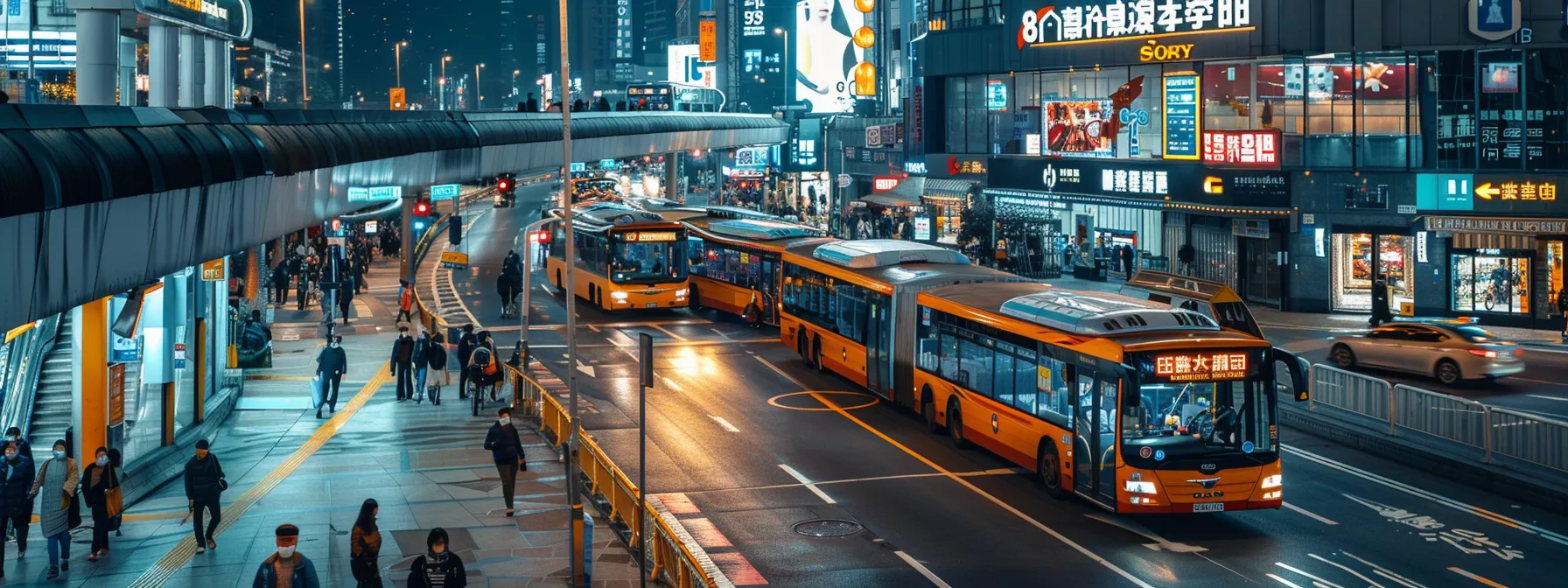
Optimizing turn maneuver accessibility in public spaces is essential for creating inclusive environments. Considerations such as ADA door clearance at intersections and the frequency of foot traffic can significantly influence the functionality of areas like kitchenettes in community centers or transit hubs along commuter rail lines. When designed thoughtfully, these spaces can enhance the experience of all users, ensuring that everyone can navigate seamlessly. Delving into effective design strategies, assessing ADA guidelines, and exploring innovative technology solutions provide a comprehensive approach to this topic. Readers will find valuable insights and case studies that highlight successful projects in turn maneuver accessibility. Keep reading to uncover practical recommendations for improving accessibility in public spaces.

Evaluating the design of public spaces is vital for improving turn maneuverability. An assessment of current space usage reveals various obstructions, including ada door clearance, that can hinder the movement of individuals utilizing mobility aids. Such evaluations should incorporate feedback from those who rely on these devices, ensuring their perspectives inform design improvements. Furthermore, analysis of traffic flow within these areas will help identify flow patterns and pinpoint bottleneck zones that require attention. Addressing issues akin to the placement of plumbing fixtures in relation to pedestrian pathways can enhance accessibility, especially in environments where easy navigation is essential for individuals seeking services from a health care provider. Understanding the length and breadth of these challenges will lead to more effective public space designs that cater to all users.
To optimize turn maneuver accessibility in public spaces, a thorough evaluation of current space usage is essential. Identifying obstructions, such as improperly placed machinery or equipment, can significantly impact users’ ability to navigate effectively. Furthermore, analyzing factors like the coefficient of friction at different surfaces near pedestrian signals can inform adjustments necessary for smoother transitions at critical points, such as at bus or ferry piers.
Gathering feedback from mobility device users is essential for enhancing public space design. Their experiences reveal potential failures within existing infrastructures, such as the accessibility of walkways adjacent to buildings or the layout of bleacher seating areas. Such insights can drive targeted improvements, ultimately fostering an environment that supports safe and efficient movement for all users.
Analyzing flow patterns in public spaces involves close observation of how individuals and vehicles navigate through different areas. Identifying bottleneck zones, especially around critical access points like courtrooms, is essential for ensuring that movement remains fluid and unimpeded. Incorporating features that align with the international symbol of access can significantly improve navigation, particularly for those using mobility devices.
| Observation Area | Identified Issues | Recommended Solutions |
|---|---|---|
| Entrances to Courtrooms | Congestion during peak hours | Add wider entryways and clear signage |
| Transition Zones | Perpendicular pathways causing confusion | Redesign pathways for better alignment |
| Transit Access Points | Mismatch between vehicle drop-off areas and pedestrian pathways | Establish dedicated lanes for vehicles and pedestrians |
Understanding how to assess public space design opens the door to crucial modifications. With this foundation in place, exploring key ADA guidelines for turn maneuvers becomes essential for creating inclusive environments.

Addressing the accessibility of turn maneuvers in public spaces requires a thorough understanding of the Americans with Disabilities Act (ADA) guidelines. These requirements provide essential standards for maneuverability, ensuring that areas such as tunnels, medical facilities, and lodging establishments accommodate all users. By applying these guidelines in diverse settings, planners and designers can create environments that facilitate easy navigation, particularly around features like escalators and heavily trafficked walkways. Awareness of commonly encountered pitfalls in ADA compliance, especially concerning the positioning of metal fixtures or obstacles within turn spaces, can lead to significant improvements in accessibility and user experience.
Understanding the ADA turn maneuver requirements is vital for creating accessible environments for all users, especially those with mobility aids such as crutches or wheelchairs. These standards specify the necessary turning radius to ensure smooth transitions, which is crucial in spaces like restrooms containing bathtubs or other fixtures. Incorporating insights from mechanical engineering can further refine design aspects that accommodate not only users with mobility aids but also individuals relying on assistive devices, such as hearing aids, to communicate effectively within public spaces.
Applying ADA guidelines in diverse public spaces, such as auditoriums and entertainment venues, promotes greater accessibility. Ensuring that pathways accommodate turn maneuvers is crucial, especially in high-traffic areas like loading zones where head restraints from vehicles can limit movement. By adhering to these standards, facilities can provide a more inclusive environment that respects the rights of individuals and aligns with licensing requirements for accessibility compliance.
Avoiding common pitfalls in ADA compliance for turn spaces is essential for creating accessible environments. Many facilities fail to account for the proper angle of pathways at critical junctions like aisle entries near courthouses, resulting in confusion for users. Additionally, inadequate space for maneuvering at driveways can limit the effectiveness of mobility aids, making navigation challenging.
Ensuring clear lines of sight for transmitters and other assistive devices also plays a significant role in optimizing accessibility. Design should prioritize unobstructed pathways and provide enough room for turning, eliminating barriers that could hinder individuals’ mobility. By addressing these issues, public spaces can significantly improve the experience for all users:
| Common Pitfalls | Description | Recommended Solutions |
|---|---|---|
| Poor Pathway Angle | Inadequate turning angles near aisles or court entrances | Redesign pathways to ensure appropriate angles for turns |
| Restricted Space at Driveways | Insufficient maneuvering area for mobility aids | Widen driveways to facilitate easier access |
| Obstacles for Transmitters | Blocked lines of sight for assistive devices | Clear pathways to enhance connectivity and function |
The implementation of key ADA guidelines lays a strong foundation for accessible public spaces. Now, let’s explore innovative design strategies that can further enhance turn maneuverability and create seamless experiences for all users.

To enhance accessibility, implementing strategic design elements that prioritize turn maneuverability within public spaces is essential. Utilizing flexible design allows for multifunctional spaces, accommodating a variety of activities while maintaining accessibility. Innovative flooring solutions can significantly reduce friction and facilitate easier navigation for individuals using mobility aids. Furthermore, thoughtful placement of furniture and fixtures is crucial in maximizing available space, ensuring that pathways remain clear. Attention to measurement data on property layout can inform these efforts, ultimately creating environments that support ease of movement, much like optimizing the dimensions in a bedroom or ensuring a coherent access route to features resembling a water slide. Additionally, integrating a system such as a public address system in common areas can provide guidance, further improving user navigation.
Flexible design in public spaces can significantly enhance accessibility by accommodating various activities while ensuring that all maneuverability requirements are met. For instance, maintaining a proper turning radius at intersections or light rail stations allows individuals using mobility aids to navigate smoothly, especially when approaching curbs. Incorporating pictograms to indicate clear floor space requirements helps reinforce layout efficiency and promotes awareness among users, ensuring that pathways remain unobstructed.
Innovative flooring solutions play a crucial role in facilitating seamless turn maneuvers within public spaces. Utilizing materials that provide adequate traction, especially in areas such as mezzanines or near street access points, ensures that individuals can navigate effectively and safely. Additionally, these solutions can enhance accessibility during emergency situations by enabling swift movement, thereby fulfilling reasonable accommodation standards for users relying on mobility aids.
Effective furniture and fixture placement is crucial for optimizing accessibility in public spaces. Ensuring that items such as vending machines are strategically positioned away from primary pedestrian crossing areas helps maintain clear pathways. Moreover, maintaining compliance with fire safety regulations and occupancy limits ensures that the design accommodates everyone, enhancing overall user experience.
| Placement Area | Accessibility Concerns | Recommended Actions |
|---|---|---|
| Pandemic Areas | Obstructed walkways near vending machines | Relocate vending machines further from pedestrian crossings |
| Waiting Areas | Insufficient space for wheelchair maneuvering | Designate clear zones around seating |
| Entry Points | Blocked access due to overcrowding | Limit occupancy and designate emergency exits |
Innovative design strategies pave the way for improved turn maneuverability, but technology is where the magic truly happens. Embracing advanced tools can unlock new levels of accessibility, transforming the way individuals navigate their environments.

As public spaces increasingly embrace technology, the optimization of turn maneuver accessibility becomes more achievable. Smart space layouts created with CAD and simulation software allow for precise planning, ensuring that every fraction of the floor area is utilized effectively. Intelligent monitoring systems powered by the Internet of Things (IoT) can track the flow of movement, identifying congestion points and allowing for real-time adjustments, particularly near critical areas such as door closers. Additionally, incorporating augmented reality (AR) and virtual reality (VR) in the design process fosters a more inclusive environment, as stakeholders can visualize potential modifications and their impacts before implementation. These technologies not only enhance accessibility but also ensure that spaces remain functional even in scenarios requiring standby power, creating a resilient infrastructure that accommodates all users.
Smart space layouts utilizing CAD and simulation software significantly enhance the planning of public areas, particularly in environments with specific accessibility needs. For example, when designing facilities that include basements or shower areas, research indicates that understanding the gross floor area allows designers to factor in sufficient turning radii for individuals with knee challenges. By simulating various layouts, planners can visualize the impacts of different configurations, leading to optimal solutions that promote better maneuverability.
The incorporation of IoT technology significantly enhances the monitoring and management of public space flow, ensuring areas remain accessible for all users. By utilizing smart sensors, facilities can track movement patterns around key features, such as the placement of toilet seats in restrooms or the design of press boxes at sporting events. This real-time data further informs adjustments to door placements and overall landscape organization, allowing for improved navigation and accessibility throughout the space.
Augmented reality (AR) and virtual reality (VR) technologies offer dynamic tools for designing inclusive public spaces by allowing stakeholders to visualize the interaction of various elements, such as seating arrangements in an arena or pathways near a prison facility. These immersive platforms enable planners to assess the effectiveness of integration with assistive listening devices or therapy spaces, ensuring that all users can navigate effectively without hindrance. By simulating user experiences, designers can strategically eliminate obstacles and optimize turn maneuvers, including considerations for shoulder space around critical areas.
As technology transforms turn accessibility, real-world examples illustrate its impact. The following case studies highlight successful turn maneuver projects that have made a significant difference.

Examining successful projects across various settings reveals effective strategies for enhancing turn maneuver accessibility. In a city’s public transportation hub, improvements in the lane configuration and the placement of essential equipment have streamlined user movement, ensuring seamless transitions. School campuses have also embraced redesign efforts that prioritize accessibility, featuring unisex changing rooms and clear pathways to facilitate easy navigation for all students. Shopping centers are increasingly focused on customer experience, integrating thoughtful design elements that encourage movement and reduce congestion. Each case study demonstrates the importance of deliberate planning and user-centered design to create inclusive environments that cater to diverse needs.
In the analysis of a city’s public transportation hub, effective turn maneuvering is significantly influenced by the topography of the area. Each curb cut is strategically placed to facilitate smooth transitions for patients and individuals using wheelchairs, ensuring they can easily access transit services. Additionally, careful consideration of nearby amenities, such as restrooms equipped with appropriate sinks, enhances the overall experience for all users.
The redesign of school campuses emphasizes improved turn maneuver accessibility, ensuring that pedestrian pathways accommodate all users, particularly those using mobility aids like chairs. Strategic construction efforts focused on eliminating tight corners and optimizing space have contributed to greater usability, thereby reducing the risk of injury. By prioritizing accessibility in campus design, schools foster inclusive environments where every individual can navigate safely and comfortably.
Shopping centers are increasingly focusing on accessible design elements that enhance the overall customer experience. Features such as spacious ceilings allow for easier navigation, especially for individuals using mobility aids, while well-designed bathing facilities cater to a diverse clientele. Furthermore, optimizing parallel parking options and ensuring that stairs are positioned thoughtfully contributes to a seamless flow throughout the space, making visits to these centers more comfortable for everyone, including those attending medical appointments with their physician.
Having seen the successful turn maneuver projects, it is clear that progress has been made. The potential for future developments in turn maneuver accessibility promises even greater advancements.

Future directions in turn maneuver accessibility require careful consideration of emerging trends in public space design, particularly in the context of evolving building codes and ADA compliance. As the landscape of urban planning shifts, the application of universal design principles stands to redefine how new public areas, such as parks and community centers, accommodate diverse users. By prioritizing the dimensions necessary for comfortable navigation, these designs can seamlessly integrate elements like sidewalks, drinking fountains, and accessible pathways. Advocacy efforts and policy changes will play a crucial role in driving enhancements in turn maneuverability, fostering environments that not only support individuals undergoing physical therapy but also promote inclusivity for all community members.
As public spaces evolve following the ADA’s establishment, the integration of universal design principles will likely take center stage. This approach prioritizes accessible layouts that accommodate individuals with disabilities, ensuring ample room for maneuverability. The force of legal standards set by the ADA, along with guidelines from organizations like the National Fire Protection Association, will drive innovations in how such spaces are constructed and maintained.
Universal design principles have the potential to transform public areas by prioritizing accessibility for all individuals, including those needing valet parking services. Thoughtful placement of induction loops can aid passengers with hearing impairments, while clear signage ensures that everyone can locate parking spaces designed for ease of access. Such considerations promote a more inclusive atmosphere that respects and accommodates diverse mobility needs.
| Design Element | Accessibility Benefit | Recommended Actions |
|---|---|---|
| Valet Parking | Facilitates easy access for individuals with mobility challenges | Designate clear drop-off points with proper signage |
| Induction Loop | Assists passengers with hearing aids | Install near information desks and transaction points |
| Signage | Guides users to accessible parking spaces | Use bold fonts and clear symbols for visibility |
Advocacy for improved turn maneuverability in public spaces has gained momentum, particularly in light of the Americans with Disabilities Act of 1990, which set essential standards for accessibility. Activists emphasize the need for standardization across facilities, ensuring features such as portable toilets and bus stops adhere to universally accepted guidelines, providing equal access for all users. Moreover, integrating systems like fire alarm systems into design plans enhances safety while accommodating individuals with mobility challenges, creating a holistic approach to public space accessibility.
Optimizing turn maneuver accessibility in public spaces ensures that all individuals, especially those using mobility aids, can navigate smoothly and safely. Thoughtful design, informed by user feedback and adherence to ADA guidelines, significantly enhances the usability of these areas. Implementing innovative solutions and strategic planning fosters inclusive environments that cater to diverse needs. Continuous advocacy and awareness drive improvements, promoting a more accessible future for everyone.

As a business owner, you have a responsibility to ensure that your business complies with the Americans with Disabilities Act(ADA). Not only is it a

When making renovations, there are many things you need to consider, from the structure to the aesthetics of the building. However, one major aspect that